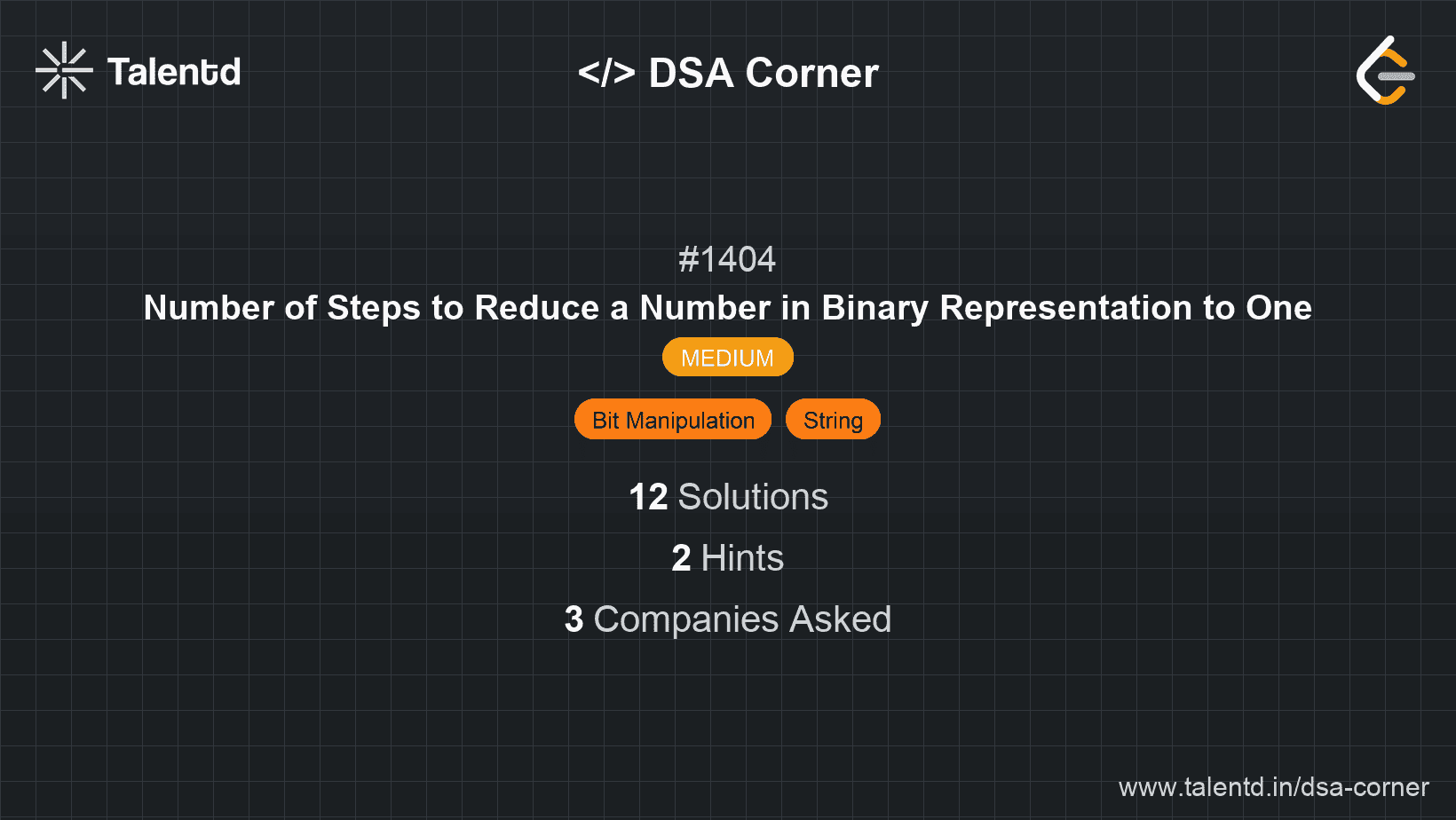
Sponsored
Sponsored
This approach involves simulating the reduction steps performed directly on the binary number string. We traverse the binary string backwards, simulating each step based on whether the current number is odd or even. Additionally, whenever we encounter a carry after incrementing an odd number, we propagate the carry to handle the necessary binary addition.
Time Complexity: O(n), where n is the length of the string s.
Space Complexity: O(1), only a constant amount of extra space is used.
1def numSteps(s):
2 steps = 0
3 carry = 0
4 # Start from the end of the string
5 for i in range(len(s) - 1, 0, -1):
6 if (int(s[i]) + carry) % 2 == 0: # Even
7 steps += 1 # Divide by 2
8 else: # Odd
9 steps += 2 # Add 1, then divide by 2
10 carry = 1
11 return steps + carry
12
13# Example usage:
14# Output: 6
15print(numSteps("1101"))This Python function iterates through the binary string from the least significant bit towards the most significant bit. It checks the parity of the current digit plus any existing carry. If the sum is even, this implies the number is even and a division takes place (1 step). If the sum is odd, an addition and subsequent division occur (2 steps). The carry represents binary addition's overflow, simulating the bit handling required.
Convert the binary representation to a decimal integer, then simulate the operations using intuitive arithmetic operations. This approach avoids character-level string manipulations.
Time Complexity: O(n) for initial conversion, O(log m) for operations (where m is the integer value).
Space Complexity: O(1), after input conversion.
The C function uses strtoul for converting a string representing a binary number into a numeric value. An arithmetic sequence thereafter reduces the number until it reaches unity based on even-odd checks.